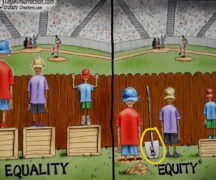Book banning and burning are centuries old and a way to erase ideas that make us uncomfortable. Many banned books are upsetting because they are about attacks on the vulnerable. And without those books, we give students a narrow and dishonest view of our world. When the innocents graduate, they go into the real world unprepared to deal with it.
The most banned books and stories reveal the form hate takes: Huck Finn, The Lottery, Bluest Eye, Color Purple, Maus, Lawn Boy, Kite Runner, Invisible Man. Of course those books can be disturbing. And book banners want students to get a rosy picture of the world. But most teachers know life is not like that and therefore choose books and lessons according to student readiness. Some state legislators and even many parents are not qualified to be the judges but certainly should have a say.
Today, whole categories of books are banned, books that present the moral failures of our country or suggest that racism, sexism, anti-semitism, and classism do not exist. In Ohio, the Governor and Hudson Valley Schools have led the way: Lawn Boy, for example, is an adolescent novel about race, class, socio-economic struggle, and sexual identity. Hudson Valley says it contains language that’s inappropriate, offensive, and sexually perverse.
California is different. There, education leaders say instruction shall provide a foundation for understanding human rights issues. That means paying attention to the successful and to the suffering. Without such important books, democracy dies.
Tom Klein
Bowling Green



